Jun 3, 2025 11:25 AM
In Memoriam: Al Foster, 1943–2025
Al Foster, a drummer regarded for his fluency across the bebop, post-bop and funk/fusion lineages of jazz, died May 28…
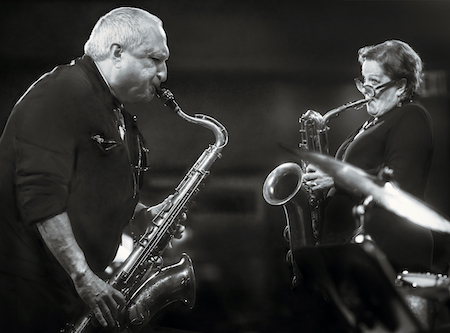
Garzone and Daly keep the spirit of New York’s 52nd Street alive during a CD release party at Dizzy’s on Sept. 15.
(Photo: Michael Jackson)Following a string of tribute recordings — 2008’s Rahsaan Roland Kirk project Rah! Rah!, 2011’s Mary Joyce Project: Nothing To Lose and 2012’s Baritone Monk — baritone saxophonist Claire Daly, a one-time Diva big band standout and member of Joel Forrester’s quirky People Like Us quartet from the late ’90s, has come up with yet another one in Vuvu For Frances, honoring Frances Ballantyne, the 98-year-old lifelong jazz fan and former denizen of 52nd Street in its heyday.
“I’ve known Frances maybe 25 years, and I would say she is my true mentor and role model of how to be in the world,” said Daly. “She’s a consummate New Yorker. You meet her and just instantly get that vibe from her. She was in an interracial marriage in the ’40s and was on the forefront of the civil rights movement. She discovered live jazz in the 1940s in Harlem, so she was hanging out with people like Willie ‘the Lion’ Smith and Sidney Bechet. She knew the Baroness (British-born jazz patron Pannonica de Koenigswarter) and used to see Bird and Monk and that whole crowd on 52nd Street. In fact, when you look at cover of Vuvu For Frances — that famous Bill Gottlieb photo of 52nd Street in 1948, which his son let me use — you could easily imagine Frances being in one of those clubs on the strip. It’s literally right from that time.”
A collection of hard-swinging standards featuring the New York rhythm section of pianist Jon Davis, drummer David F. Gibson and Daly’s longtime collaborator, bassist Dave Hofstra, Vuvu For Frances finds the bari ace joining forces with Boston tenor sax legend George Garzone. The results on luxurious ballads like Johnny Mercer’s “Fools Rush In,” Ray Noble’s “The Very Thought Of You” and bits of Ellingtonia like “Mood Indigo” and “Warm Valley” are simply sublime. But when they fire it up on uptempo swingers like Miles Davis’ “Half Nelson,” Charles Lloyd’s “Sweet Georgia Bright” and a burning romp through Rodgers & Hammerstein’s “People Will Say We’re In Love,” the results are scintillating.
Though their friendship goes back to the mid-’70s, when Daly was strictly an alto player studying with Garzone at Berklee College of Music, this was the first time the two played together on record. During her years in Boston, Daly bartended at Michael’s jazz club on Gainsborough Street, just so she could see Garzone play every Monday night there with The Fringe.
She remained on that job for three years, taking in the spontaneous free-jazz from that legendary Boston trio of tenor titan Garzone, bassist Bob Appleman and drummer Bob Gullotti on a weekly basis. “At first, I didn’t understand what was happening, but I wanted to know,” she explained. “It was spontaneous and free, it was never the same. It was ultimately creative. And that shaped my musical life, for sure.
“I remember one time watching George solo,” she continued. “He was kind of rocking and playing his head off, and I just thought, ‘This is the closest thing to seeing John Coltrane I’m ever going to see,’ not knowing then that he and Trane shared a birthday.”
And while Garzone still regularly inhabits that intense “Trane zone,” as he does so profoundly on Steve Kuhn’s uptempo minor key waltz “The Saga Of Harrison Crabfeathers,” using the opening of Coltrane’s “Acknowledgement” from A Love Supreme as a launching pad into his heightened solo, he also has a long history of embracing standards in a more mellow vein. “When you hear him on ‘Mood Indigo’ on the new album, it’s just so deep,” said Daly. “That tune just slays me.”
In fact, Garzone is partly responsible for naming the album. As Daly explained, “George and his wife were in town, and we were in my car, and at some point he asked me what I was doing. I told him I was going make a record for Frances, who he knew, and he said, ‘When are you doing that?’ When I told him we were going in to record in two weeks, he said, ‘Oh, I could come down then.’ So he offered to play on it. And when I told him that we were playing all standards and stuff that Frances likes, he said, ‘Great, I’ll do the vuvu.’ Then he explained that vuvu is that saxophone sound that you hear where it’s very airy and melodic and mellow-sounding. Initially, I was going to call the album For Frances. But after George told me that, I thought Vuvu For Frances was much better.”
Garzone elaborated on the concept of vuvu: “I grew up in an Italian saxophone family and my uncle Rocco played tenor. He was from the old school, so when I started taking lessons with him in the back room of this pizza shop in Dorchester, Massachusetts, he was into that vuvu, which is the sound you hear from Lester Young, Coleman Hawkins, Stan Getz, Ben Webster. So Claire knows that playing free is my kind of thing, but she knows I can also handle the vuvu.”
While Garzone thought he might contribute to just one or two pieces, he ended up playing on the entire album, with the exception of “Harlem Nocturne,” which is more of a piano showcase for Davis. The two together swing copasetic and conversational, even engaging in some free-jazz overblowing at the tag on “The Lonely Goatherd,” perhaps the corniest Rodgers & Hammerstein tune from The Sound of Music. “I tried to play it straight on the first take,” said Garzone. “Oh, my god, forget about it! I was laughing so hard I couldn’t do it. I said, ‘Claire, I’m so sorry.’ I couldn’t play the thing normal.”
Added Daly, “The Fringe is so much a part of George’s history. … That idea of ‘just get in there and go!’ And I wanted to honor that, too, on this record. So I just thought, ‘Well, Frances will forgive us if we just have one completely off-the-rails throwdown.’ And she did.”
The rest of the tunes, from Jimmy Van Heusen–Sammy Cahn’s “All The Way” to Rodgers & Hart’s “Manhattan,” are all timeless standards that may have fallen out of fashion but are still beloved by jazz fans like Frances Ballantyne.
“For me, it’s important to keep this music and that whole spirit of 52nd Street alive,” said Garzone. “That’s the story of this record. And I told Claire, ‘This record has a good chance of hitting just because of what it represents. Because no one’s doing this kind of thing, where you personify not only the sound but also the history of New York.’”
“They’re just cool tunes,” added Daly. “And you don’t hear them a lot so it’s nice to showcase them. As Jon Davis said when we listened back to a rough mix for the first time in my car, ‘There are not a lot of people making records like this now.’ And that’s kind of true because everybody’s doing originals now, which is great, too. But it’s not in fashion so much right now to be swinging. So I kind of like that we did.”
Ballantyne happened to be in attendance at Dizzy’s for the Vuvu For Frances record release party in late August. As Daly recalled, “She was at a table of 12 and had eight other people around at other tables. So she had at least 20 people there that night. She’s got a better social life than I do. She has a very active life at 98. Frances has gone to see live jazz her whole life and often says, ‘Music feeds my soul.’ And she is one of the most savvy listeners that I know. Like, she’ll come to a gig and say, ‘Oh, yes, that was really good. But I don’t think the drummer was really listening.’ She’ll make some astute and mostly true comments like that.”
Daly described their Dizzy’s engagement as a dream gig for her. “The first set we did was off the hook, maybe the best gig I ever had. Because I got to stand there at Dizzy’s next to George playing tunes for Frances. It’s very deep for me personally.”
Said her one-time teacher Garzone, “Claire’s playing on this record and at our Dizzy’s gig was the best I ever heard her play. She really stepped up to the plate. And I told her afterwards, ‘Let’s think about the next one.’ And she was flabbergasted.” DB
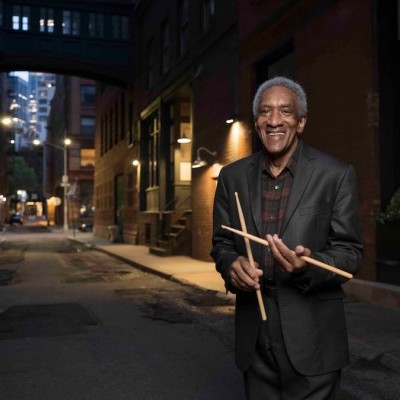
Foster was truly a drummer to the stars, including Miles Davis, Sonny Rollins and Joe Henderson.
Jun 3, 2025 11:25 AM
Al Foster, a drummer regarded for his fluency across the bebop, post-bop and funk/fusion lineages of jazz, died May 28…
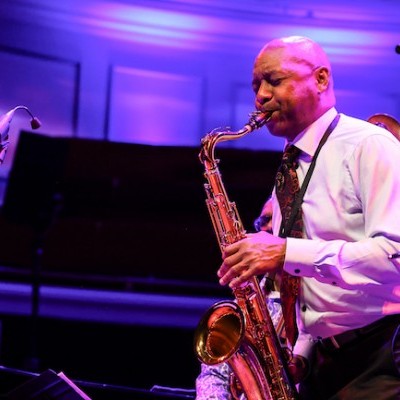
“Branford’s playing has steadily improved,” says younger brother Wynton Marsalis. “He’s just gotten more and more serious.”
May 20, 2025 11:58 AM
Branford Marsalis was on the road again. Coffee cup in hand, the saxophonist — sporting a gray hoodie and a look of…
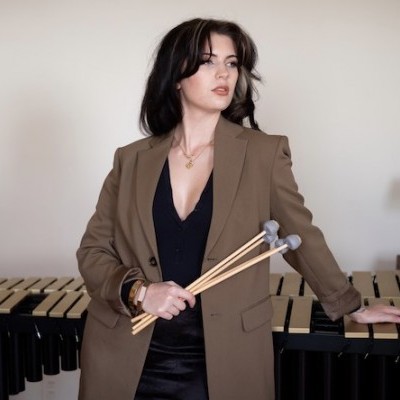
“What did I want more of when I was this age?” Sasha Berliner asks when she’s in her teaching mode.
May 13, 2025 12:39 PM
Part of the jazz vibraphone conversation since her late teens, Sasha Berliner has long come across as a fully formed…

Roscoe Mitchell will receive a Lifetime Achievement award at this year’s Vision Festival.
May 27, 2025 6:21 PM
Arts for Art has announced the full lineup for the 2025 Vision Festival, which will run June 2–7 at Roulette…
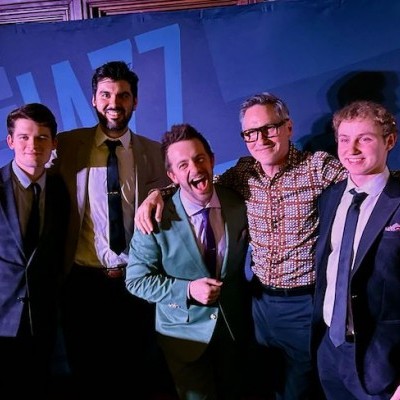
Benny Benack III and his quartet took the Midwest Jazz Collective’s route for a test run this spring.
Jun 3, 2025 10:31 AM
The time and labor required to tour is, for many musicians, daunting at best and prohibitive at worst. It’s hardly…